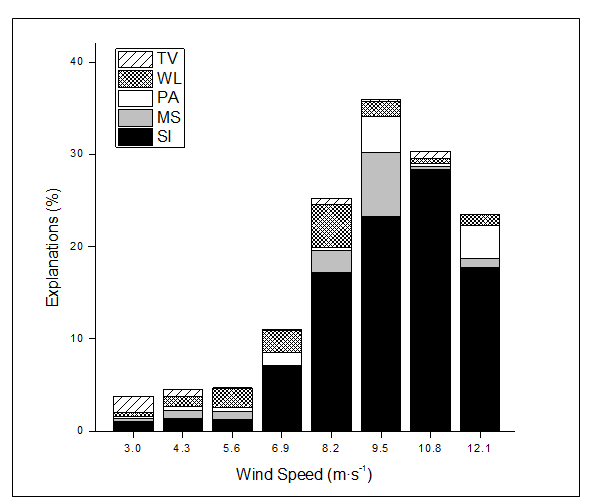Soil seed bank, as the basis of all vegetation processes, can provide diaspores for population maintenance and community assembly. And it is of practical significance in ecological restoration of degraded ecosystems. The formation of soil seed bank consists of seed dispersal, settlement and burial. Seed burial is a complex process, affected by factors such as soil features, seed characters, natural dispersal forces and tillage practices. However, the process and mechanism of seed burial are not been well known. How lands cape configuration, dispersal agents and diaspore features interact to deter mine the input of seeds into the soil, which is the first part of the formation of a soil seed bank, is a major challenge.
To determine the role of diaspore traits, sand surface configuration and wind speed in seed burial during the wind dispersal, Prof. Zhimin Liu and PhD student Wei Ling from the Institute of Applied Ecology of Chinese Academy of Sciences investigated the seed burial probability of 36 species with different diaspore traits under eight wind speeds and three sand surface configurations during wind dispersal by using a wind tunnel.
The results show that environmental factors are more important in regulating soil seed bank formation than diaspore traits. The difference in the seed burial between slopes became more conspicuous and the barriers strengthened seed burial only when the wind speed is high. Barriers raise the wind speed threshold for soil seed bank formation. Effects of diaspore traits on seed burial were only significant at high wind speeds, and seed burial was more likely to be formed for small or flat elongated diaspores than for large or spherical ones. The effect of diaspore traits on seed burial is modified by shifts in wind speed and sand surface configuration. We can modify the sand surface configuration and therefore increase soil seed bank formation, which could accelerate ecological restoration processes.
This study can help protect the endemic and rare species, understand their renewal process, and analyze the limits of seed availability. Meanwhile, it is of great significance to evaluate seed availability in the formation of soil seed banks.
This study was published in Plant and Soil entitled “How do diaspore traits, wind speed and sand surface configuration interact to determine seed burial during wind dispersal?”

Fig 1. Explanations of impact factors to the total variation in seed burial probability under different wind speeds (Image by LIANG Wei).
MS: diaspore mass (mg), PA: projected area (mm2), SI: shape index, WL: wing loading (mg·mm?2), TV: terminal velocity (m·s?1)